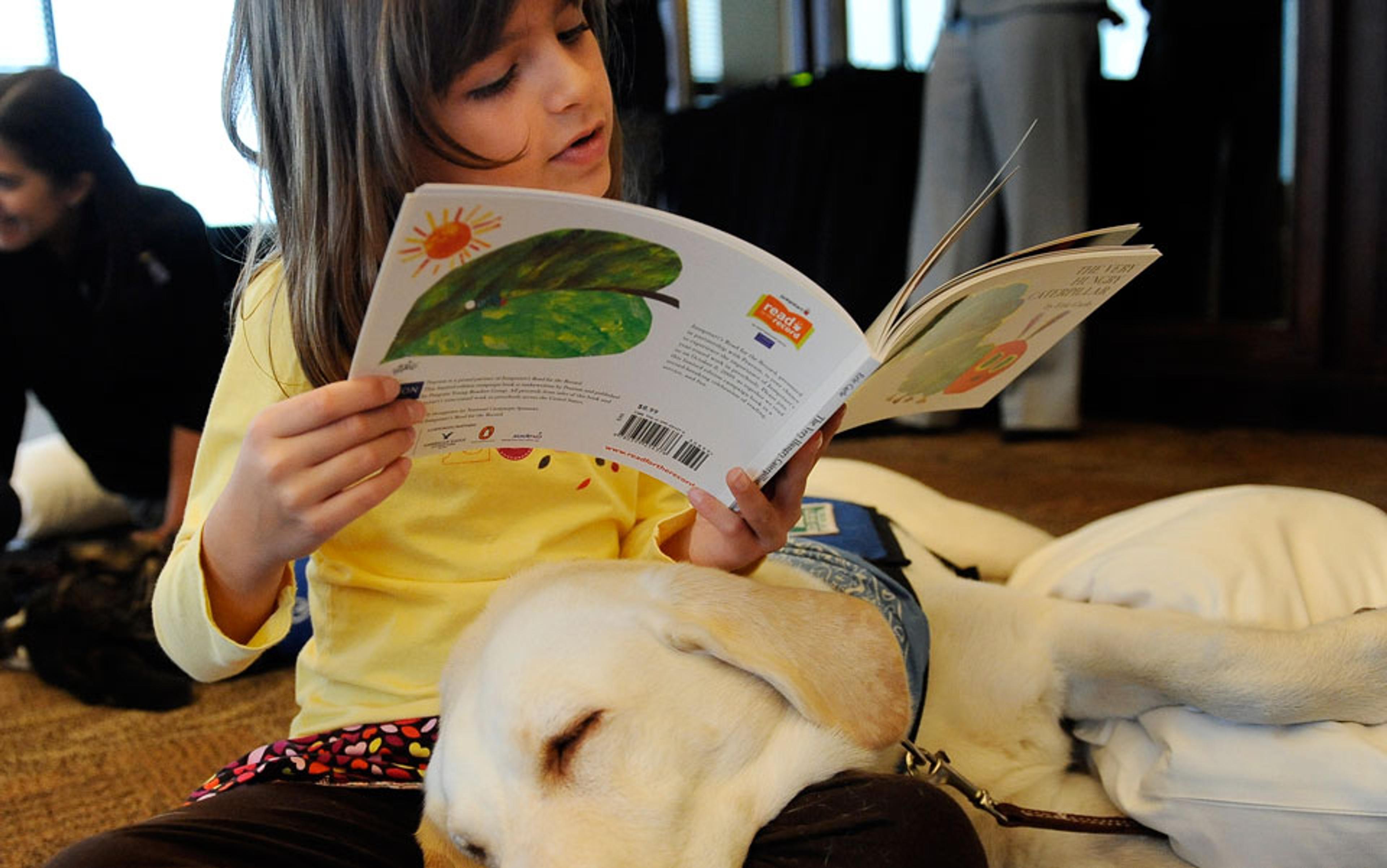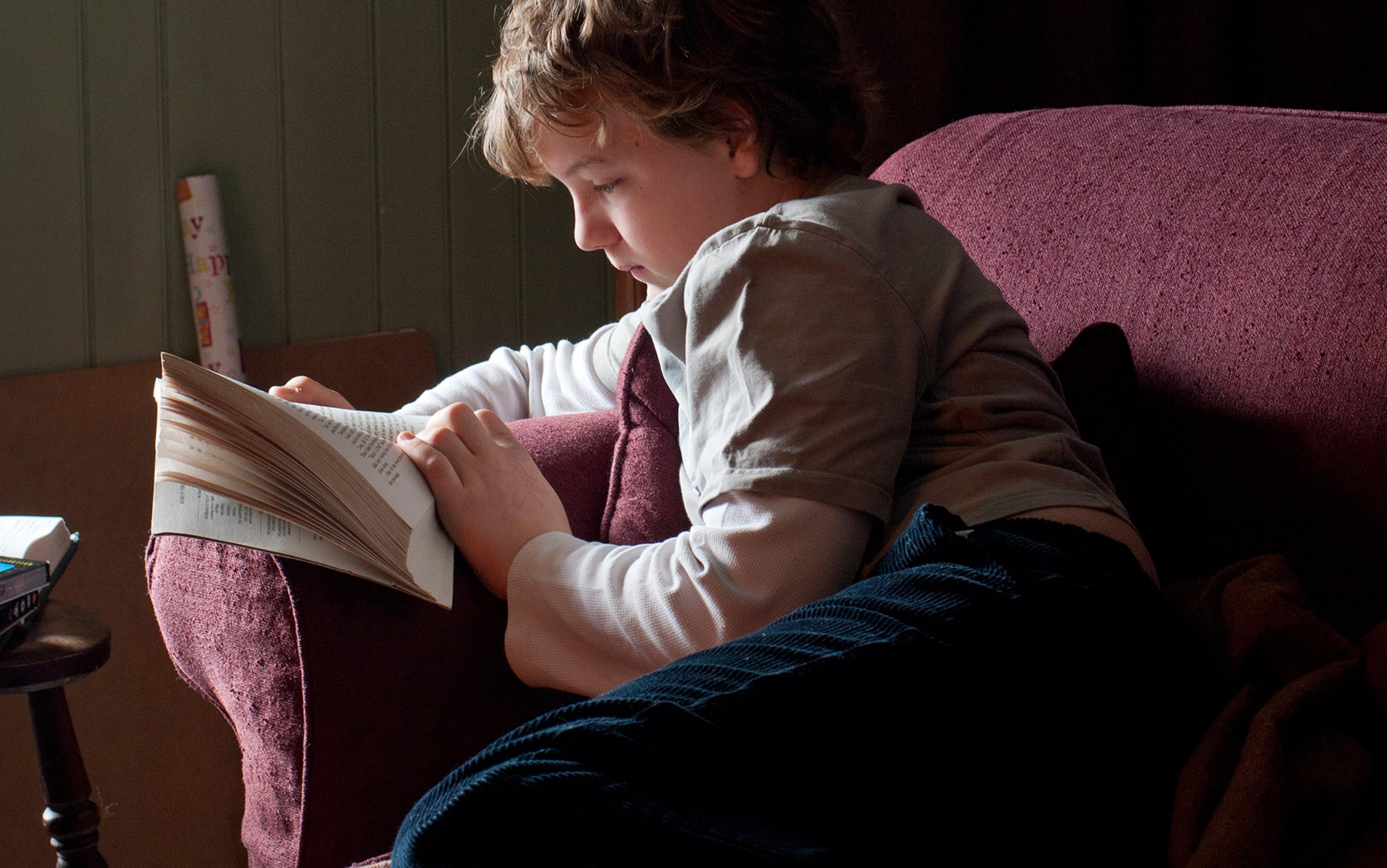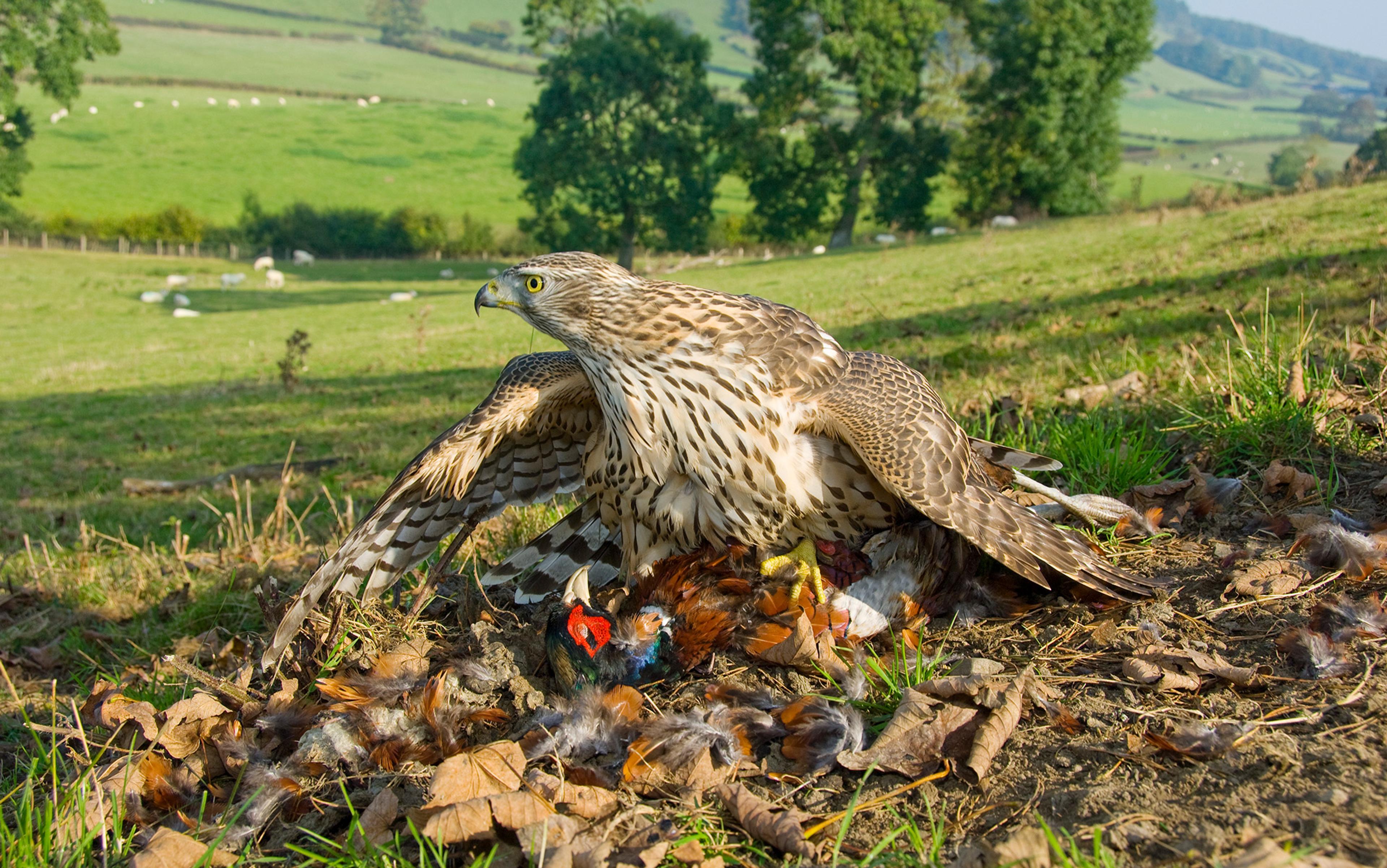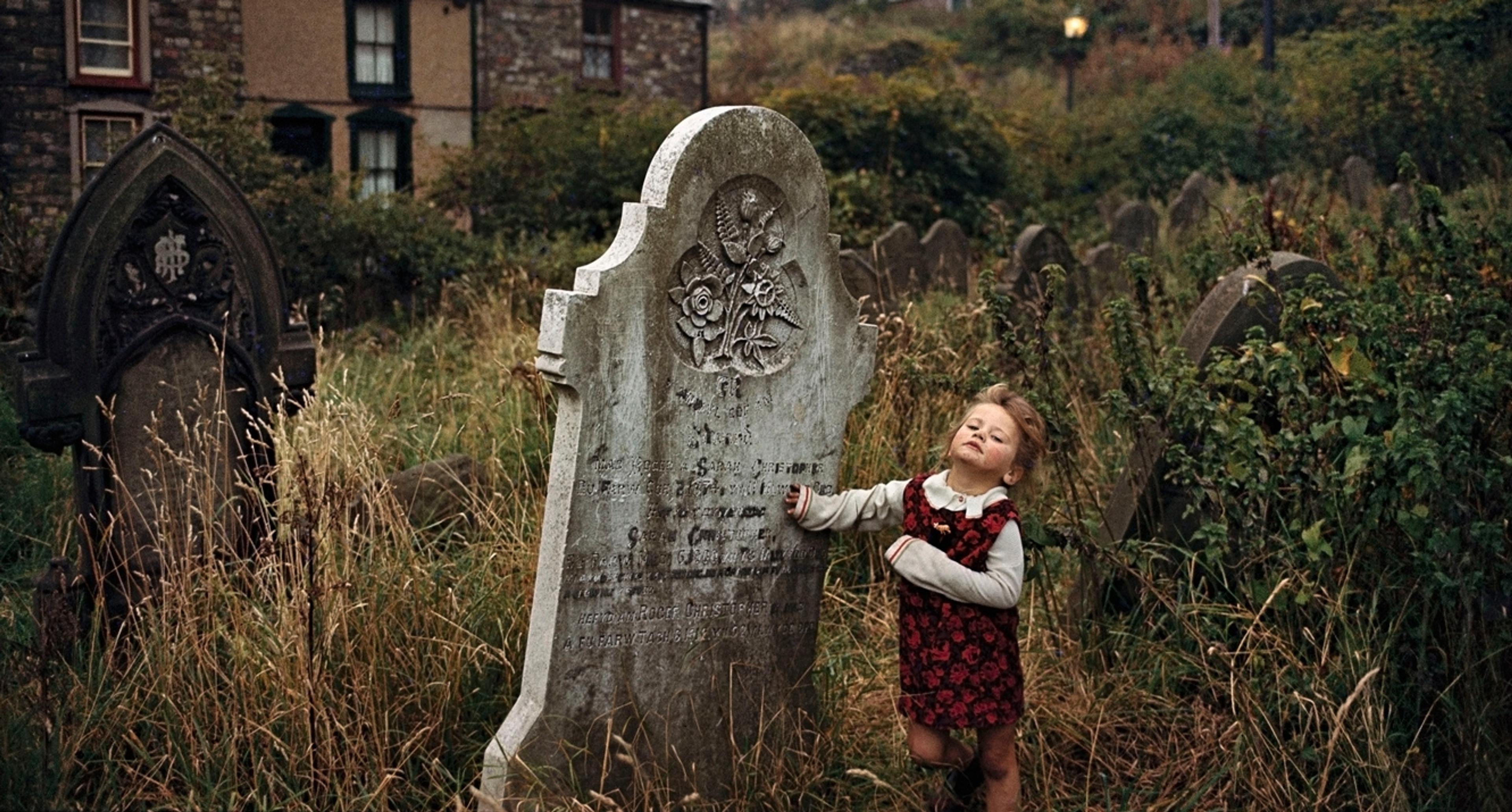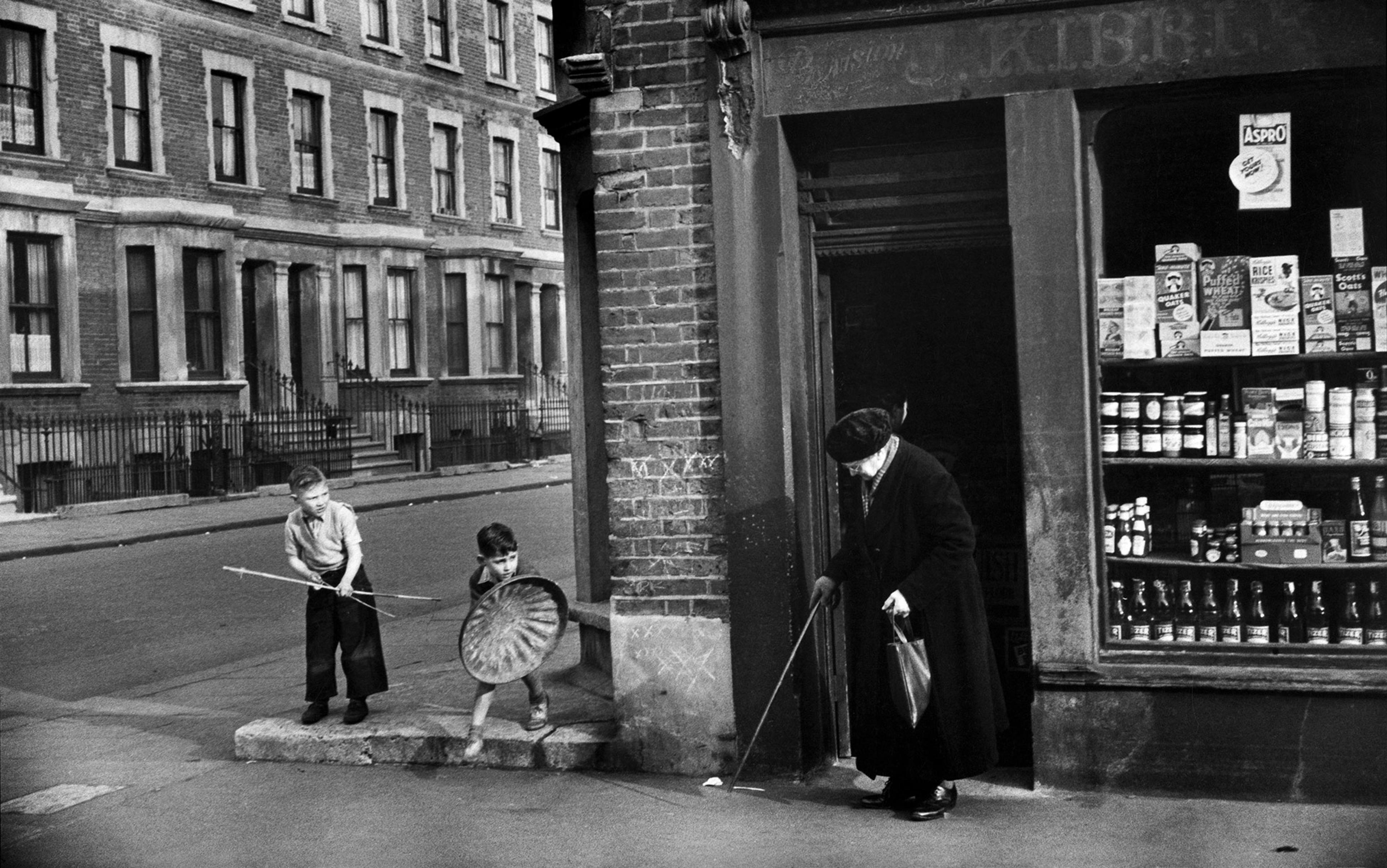There are times when I’m Skyping with my father that, for a moment or so, I confuse his image on the screen with mine. We are both grey-haired and bearded now, and though his facial wrinkles are more deltaic than mine, the resemblance between us is close enough to fool me briefly. After all, in my first memories of him, he was fully eight times my age. Now that gap has shrunk, and he is less than twice as old as me. But for the saving graces of some sort of Zeno’s paradox of ageing, I might catch up with him soon.
My first memories of my father are of him reading to me. Or rather, they are of him reading to all of us, his children, seven pages each, in turn. In the earliest memories, there were three of us, later six. We would be in my sisters’ room, tucked in, with me at the tail end of my sister Anne’s bed. Clare, the eldest, was first, then Anne, and then me, each of us indifferent to the stories read to the others. Clare pulled on his earlobe, sucked her thumb, and listened. By the time my turn came, he was often sleepy but, if he nodded off, we prodded him back to his duties. I can still recall some of those early reads. There was Ben Ross Berenberg’s The Churkendoose (1946), an unfortunate creature, ambiguously part chicken, turkey, duck, and goose. There was Noel Barr’s Ned the Lonely Donkey (1952), the farmyard beast that does his best to make friends. There were also rhyming stories, bird books, and evocative tales of prehistoric giants.
Some years later, my teacher, Mr O’Leary, would read J R R Tolkien’s The Hobbit (1937) in school as a reward for good behaviour. I was enchanted by the story, so my father bought me a copy, and it became the first to give me that distinctive pride that comes from possessing a special book. From my reading of The Hobbit I date my love of woodlands, a love that has shaped much of my life. Two decades later, I read to my eldest child from that same special copy.
Those bedtime stories, read in the crevices of the day’s end, were meant to prepare us for a night of that twitching repose that passes for childhood sleep. But looking back on them now, the nightly stories also irrigated our imaginations, preparing us for the day that followed. They steadied us for the small tribulations of school, and primed us for expeditions to the outdoors of garden and neighbourhood and, during the weekends at least, our visits to the beaches of Dublin.
Though we began with lonely donkeys, confused wildfowl, and rhymes about dinosaurs, some years later my father and I scrutinised nature guides together, learning the names of actual creatures and their habits. My father was always deeply interested in nature. As an amateur malacologist, or student of molluscs, he used to bring us to the beaches of the eastern Irish seaboard on Saturday mornings to search for shells. We would pile into his old Morris Oxford and spend the morning scouring the Dublin sands, looking for surf-heaved treasure, our guidebooks at the ready. Of course, mornings after storms were best, meaning that these tended to be wintry expeditions. We patrolled deserted strands under grey skies, just beyond the reach of the apocalyptic fingerlike chimneys of Poolbeg power station, which dominated Dublin Bay. I don’t recall that we were especially scientific in our collections though, in addition to guidebooks, my father had weighty monographs on the topic about the house, monographs whose wonderful illustrations we would pour over with him. To this day, I know the Latin binomials of most molluscs of the Irish coastline.
Are there special books that parents should choose for the Great Indoors? Are there special ways to read them?
My father kept a saltwater aquarium, which I am told is difficult to maintain. The hermit crabs, my favourites, mostly kept to themselves — for such are the ways of crabs — though they would come out to devour morsels of ham. Once a year, the family bath was repurposed as a tank for raising tadpoles. The first truly scientific text I read, in fact, was on the life cycle of the frog. As their frog legs emerged, we would provide lollipop sticks as floating islands and they would crawl out of the shallow water upon them, recapitulating the first moments of terrestrial life. They, too, had a taste for ham. I once saw a frog emerge from our back garden and look at me as if trying to place a memory, before leaping into the street beneath an oncoming car.
We kept pets and studied books on their maintenance. We had budgies, rabbits, and a tortoise named Bert. Bobby the budgie had the somewhat understandable, though wholly unforgivable, habit of clinging fiercely to his perch on one’s finger while taking a shit. His little pink feet would burn with the evacuatory strain. I don’t recall this problem mentioned in Enid Blyton’s Adventure series, books that I had devoured years earlier, where Jack’s parrot Kiki was more a helpful conversationalist than a muttering mess-maker.
Bert the tortoise was a special favourite of my mother’s. He would scamper, to the best of his ability, to meet her, his nails clicking on the pavement like a nervous lover tapping on a window pane. Bert liked to have his throat scratched: he would extend his head upon the improbable stalk of his neck towards her, and my mother would oblige. He went missing one late autumn. We assumed, based on our reading of a book on tortoise care, that he had hibernated in the garden. When we found him much later, our hearts were broken, as it was clear he had upturned himself and died on his back, beyond the help of the family that cared for him. Bobby’s passing was also a torment. He was slaughtered, in his birdcage, by a cat. I did have one defence against these dismal existential events. By the time of the flattened frog, and Bert and Bobby’s sad demise, I’d been mainlined dozens of nature books that filled my head with their many details about the sterner aspects of ecological life. I expected to find death in nature.
When people ask me what experiences made me want to be an environmental scientist, I usually think first of adventures with pets, shell-collecting along Dublin’s strands, maintaining the aquarium with my father, and much later, the college summers I spent collecting insects in Ireland’s national parks. But it seems clear to me now that time spent indoors, reading and being read to, had an equally powerful affect on me. Reading introduced me to nature — the sort of ordinary but wholly involving nature I encountered right outside my door.
I’ve been thinking about the environmentally salutary implications of children’s books a lot lately, and not only for their value in minting the next generation of naturalists. Richard Louv’s Last Child in the Woods (2005) has launched a movement encouraging this more sedentary generation of children to get out of doors, but I wonder if there might also be an environmental benefit to be gained by fortifying those intimate indoor moments when parents read to their children. Are there special books that parents should choose for the Great Indoors? Are there special ways to read them?
Having now spent some time examining the content of contemporary children’s bookshelves — visiting the local library, compiling and analysing lists of children’s classics, chatting with friends and neighbours who have small children — I have come to the conclusion that reading about nature might be simply unavoidable, since it is hard to find kids’ books that are not about our furred and feathered friends, or their prehistoric ancestors.
Of course, in an important sense, every book ever written is about nature. Even a writer as arcane and minimalist as Samuel Beckett knew he was reflecting on the environment. In Beckett’s novel The Unnamable (1953), the eponymous narrator is alone, despite his promise that ‘I shall not be alone, in the beginning.’ He goes on: ‘I am of course alone. Alone. Things have to be soon said. And how can one be sure, in the darkness?’
Beckett’s story could not be more spare, more replete with loneliness, hopelessness, emptiness and despair. But despite the stripped-down nature of the story, The Unnamable is essentially a meditation on nature: the human body and its physical and social needs, and the natural world as conjured up by mere utterance. ‘[I]n the world of nature, the world of man,’ the narrator asks, ‘where is nature, where is man, where are you, what are you seeking’. To those readers who find this work uninterpretable, John Calder, Beckett’s publisher, asks them to consider ‘how well they understand not only their own lives, but what they see when they look out at the world; how they interpret what they see, little of which could be understood anyway’. The Unnamable is thus not only about nature but is itself like an object of nature, simultaneously presenting itself and receding from human meaning. If this is the case, then the canon of nature writing could be broadened. In the end, it might be more difficult to decide which great novels aren’t environmental classics.
I recently examined the lists of the top novels of the previous century to contrast the prevalence of nature as a theme in adult literature and in books for children. And indeed, given time and ingenuity, one can make the case for most novels on the adult list being a little tinged by green. But, I must confess, reach too far down the Modern list and an attempt to find the environmental significance becomes strenuous. In the end, one must concede that there aren’t that many adult novels that qualify as explicitly environmentally themed. One that certainly qualifies is Jack London’s The Call of the Wild (1903): the hero is a dog named Buck, who initially lives comfortably in California, but who is sold as an Alaskan sled dog, and adaptively sheds his domesticated traits. George Orwell’s Animal Farm (1945) qualifies too, though presumably we readers know that his primary purpose is to tutor us on fascism, not induct us into the ways of the barnyard.
Potter balked at Toad combing his hair, complaining that it was a ‘mistake to fly in the face of nature’
Yet there are no great strains of interpretation needed to find nature in children’s literature. I performed the same analysis of comparable lists of the best children’s literature, including an especially helpful catalogue provided by TeachersFirst, a free online resource for educators in the US. I reviewed the titles in every age category and scored them for their environmental relevance. Being the father of two children, I knew many of them already, but I also reviewed those titles that were new to me. I found that a full 100 per cent of books recommended for preschoolers are environmentally themed. And not in the way that Beckett’s The Unnamable or Max Beerbohm’s Zuleika Dobson (1911) are environmental. No, these titles include The Very Hungry Caterpillar (1969) by Eric Carle which is quite simply about a very hungry caterpillar. Brown Bear, Brown Bear, What Do You See? (1967), written by Bill Martin Jr and illustrated by Carle, is about what the said bear and other animals see. The Rainbow Fish (1992) by Marcus Pfister is about the development of social behaviour in a very colourful fish. And The Runaway Bunny (1942), written by Margaret Wise Brown and illustrated by Clement Hurd, is about a rabbit tempted to bolt from home and his mother who is determined to follow him. Nature is everywhere in the preschooler canon.
The proportion seems to slip steadily as children get older. Sixty per cent of the 36 books recommended for four- to eight-year-olds feature animals, or are in other ways concerned with nature. For the nine-to-12 age group, it’s just over 50 per cent. However, it’s fair to say that all of the (admittedly much smaller selection of) books for young adults could be described as promoting environmentally sensibilities in its readers. These include the aforementioned ecologically rich The Hobbit; Summer of the Monkeys (1976) by Wilson Rawls, in which a young boy attempts to return chimps to a travelling circus; and The Cay (1969) by Theodore Taylor, a survival tale set in the Caribbean Sea.
When I look back at it now, my father’s choice of reading material for us was not simply an expression of his own inclinations. Sticking to the classics, it would have been impossible for him to avoid reading to us about nature.
Although children’s books are emphatically nature-themed, the animals in them are anthropomorphised. Only rarely do popular books written for the youngest children provide accurate natural history information. The caterpillar, brown bear, fish, and bunny in children’s books do not behave in species-appropriate ways. One doubts, for instance, that in ordinary circumstances a colourful fish would be overly concerned with the hurt feelings of friends, nor would that fish, I suppose, engage an octopus as a life coach. It would seem that animals give voice to an adult world that wants to inculcate children with commendable virtues. Therefore, might animals play a starring role in children’s book independent of children’s particular interest in animals? After all, how better to socialise the young human animal than with tales of other well-behaved animals? In this model, as the child gets older, and becomes more successfully acculturated, there is less of a need to invoke our animal pals, which explains why we see nature fading out of children’s literature as they grow older.
There is now, however, compelling evidence that children’s interest in animals might reflect innate desires of their own, rather than some adult indoctrination scheme. The ecopsychologist Olin Eugene Myers from Western Washington University has written that, for children, ‘the animal emerges … as a truly subjective other whose immediate presence is compelling’. Vanessa LoBue and her colleagues at Rutgers University and the University of Virginia published a researcher paper in 2011 showing that children under four responded preferentially to live animals — fish, hamsters, snakes, and spiders — than to ‘interesting’ toys. The children gestured more frequently to the animals, talked more to them, and asked more questions about them, and parents encouraged this interest.
Whether or not children’s identification with animals is artificially manufactured by parents, has some innate basis, or — as seems most likely — is a combination of both nature and nurture, the inclusion of animals in tales written for the purposes of instruction is an old habit. Animals perform their roles as moral educators in contemporary children’s books much in the way that they did in Aesop’s time. One of the first children’s books, John Newbery’s A Little Pretty Pocket-Book (1744), provides several fables in which animals feature. By the turn of the 20th century, anthropomorphic animals had become very popular. The Tale of Peter Rabbit (1902) by Beatrix Potter featured animals wearing clothing and The Wind in the Willows (1908) by Kenneth Grahame continued the trend, although Potter balked at Toad combing his hair, complaining that it was a ‘mistake to fly in the face of nature’. And in today’s world of Pixar and Disney, the pattern of anthropomorphising animals for purposes of moral instruction continues unabated.
Often, parents might not know enough to answer the questions that arise from even the simplest of children’s books
There is strong evidence that having animals in a child’s life is important for that child’s moral development. A connection with live animals can increase a child’s empathy and has been the basis for a number of important children’s programmes, and even used as part of therapies for troubled children. But, so far, there has been much less attention given to the significance of fictional creatures in a child’s life. At the very least, it seems highly likely that reading stories to children about nature provides an opportunity to foster an environmental ethic.
Researchers who examine reading aloud to children have shown that having open-ended discussions about the material is crucial to the effectiveness of bedtime stories. According to a 2011 paper by the early education researchers Xenia Hadjioannou of Penn State University and Eleni Loizou of the University of Cyprus: ‘True booktalks involved interactions that were in many ways reminiscent of the kinds of conversations groups of adult readers have when talking about a book: all participants work together in thinking and trying to make sense of the book through explorations, wonderings, connections, and affective responses.’
But even if all parents read stories to their children, and discuss them patiently, not every parent is environmentally literate. As what is now the US National Environmental Education Foundation stated in their report ‘Environmental Literacy in America’ (2005): ‘Most Americans believe they know more about the environment than they actually do.’ They reported that about 80 per cent of Americans rely upon incorrect or outdated myths about the environment. Often, parents might not know enough to answer the questions that arise from even the simplest of children’s books.
Since most of the books we read to our children are environmentally themed, it is clear that, without improvement in environmental literacy, parents are squandering one of the greatest opportunities they have to cultivate in their children a love for the natural world that we all depend upon.
Sometimes I spot my children walking in our hometown of Evanston, Illinois, or slightly further afield, for example, ambling down a Chicago street, and for a moment or two I see them merely as young men out among the people of the world. Seeing them grown up makes me proud. The older of the two is a mathematics and philosophy major, the younger is a senior in high school and a writerly sort. Just as their grandfather did with me, I read to them almost every night of their childhood. In fact, they were read to until they were adolescents. After all, we had all of the Lord of the Rings to complete (my father had left me to my own devices before we got that far).
Though I adopted some of my father’s interests in the natural world and turned this into my profession, the fact that my boys are not likely to carry on this vocation is unimportant to me. What is important is that the stories we read, and the conversations my boys had about these books with their mother and me, seem to have had some bearing on their growth as the interesting, informed, ethically sound young men that they are. They are both tender with animals and with the natural world that surrounds them. Though they share their generation’s partiality for being indoors, nevertheless they also incline towards sustainable living, though they might not use that exact term. The youngest, named Oisín, recently walked three miles in a tuxedo to his junior prom, resisting my offer to put him in a cab.
All parents have their own reasons for reading to their children, but surely most suppose that it will make them smarter people, better communicators, and more ethically inclined. Many will hope, no doubt, that their children will care for both the people and the creatures of the world that surrounds them. But to achieve these objectives, parents might need to do some reading themselves, so that their children could learn something more than good manners from the enchanted beasts of bedtime.
